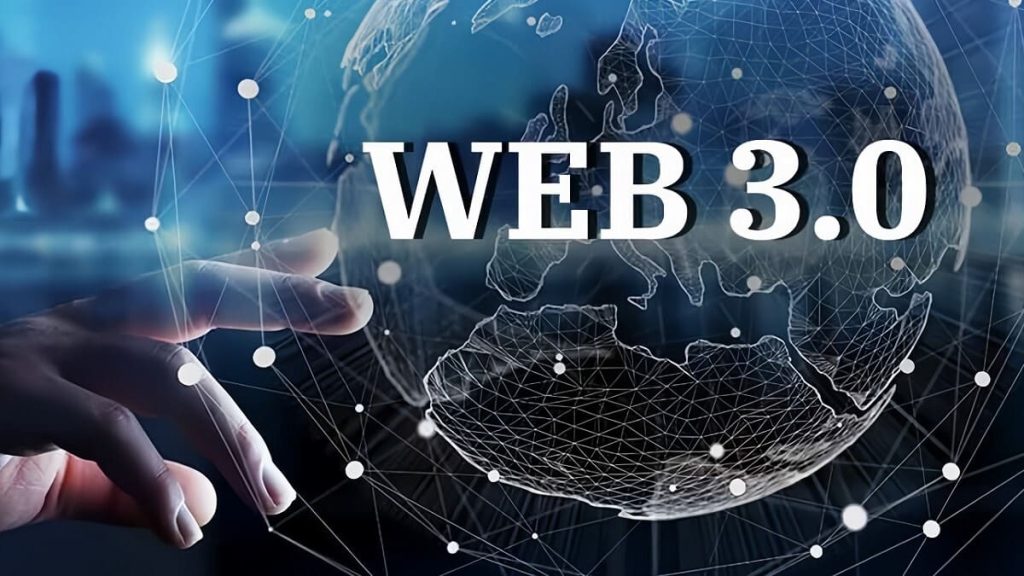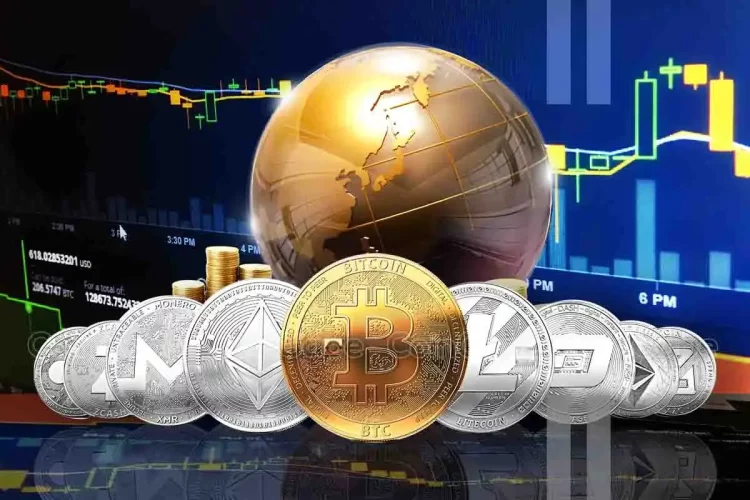Introduction
The rapid evolution of technology has always been driven by the desire for decentralization, security, and transparency. Over the past decade, Web3 has emerged as a revolutionary concept that is set to transform the way we interact with the internet. Web3 technology is seen as the next iteration of the internet, bringing together decentralization, blockchain, and cryptocurrency to create a more open, user-governed online ecosystem. With the rise of Web3, projects are increasingly blurring the lines between the traditional internet and the cryptocurrency market, leading to a profound shift in how data, assets, and value are managed online.
The advent of decentralized applications (dApps), smart contracts, non-fungible tokens (NFTs), and Decentralized Finance (DeFi) are just some of the innovations powered by Web3 that are contributing to this integration. The shift from Web2 to Web3 brings with it a transformation in user ownership, digital assets, and the overall structure of the internet. As more projects emerge, there is a growing interest in how Web3 technology will facilitate the future of the internet and shape the cryptocurrency market.
This article explores the development of Web3 technology, the projects that are helping to drive this transformation, and the ways in which Web3 is bridging the gap between the traditional internet and the cryptocurrency ecosystem. We will also discuss the challenges, potential, and future prospects of Web3 as it becomes a driving force in the digital economy.
1. Understanding Web3 Technology
1.1 What is Web3?
Web3 is often referred to as the “decentralized web” or “Web 3.0,” representing the next phase in the evolution of the internet. It is built upon the principles of decentralization, blockchain technology, and peer-to-peer (P2P) networking, aiming to return control of data, transactions, and applications back to users, removing intermediaries like tech giants and centralized service providers.
Unlike Web2, where large corporations such as Google, Facebook, and Amazon control and profit from user data, Web3 aims to put the power back into the hands of individuals by allowing them to own and control their own data, digital identities, and assets. In Web3, transactions, content creation, and application governance are decentralized, and digital assets can be owned directly by users without the need for a central authority.
At the core of Web3 is blockchain technology, which provides a transparent and immutable ledger for transactions. Blockchain allows for the creation of smart contracts, tokens, and decentralized applications that operate autonomously without the need for intermediaries. This technology ensures that data is secure, transparent, and tamper-proof, providing a solid foundation for the decentralized economy.
1.2 Key Components of Web3
There are several critical components that enable the functioning of Web3:
- Blockchain: Blockchain is the foundational technology that powers Web3. It enables decentralized transactions by providing a transparent and immutable ledger for all interactions. Cryptocurrencies like Bitcoin, Ethereum, and other altcoins are built on blockchain networks.
- Smart Contracts: Smart contracts are self-executing contracts with the terms of the agreement directly written into lines of code. They run on blockchain networks and automate processes such as transactions, asset transfers, and other agreements.
- Decentralized Applications (dApps): dApps are applications that run on blockchain networks and are designed to be decentralized, meaning there is no single point of control. These applications leverage blockchain and smart contracts to offer services like decentralized finance, supply chain tracking, gaming, and more.
- Cryptocurrency and Digital Assets: Web3 allows users to own digital assets in the form of cryptocurrencies and NFTs. These assets can be traded, sold, or used in decentralized applications, creating new opportunities for value exchange and ownership.
- Decentralized Finance (DeFi): DeFi refers to a new class of financial services that operate without the need for centralized intermediaries such as banks or brokers. DeFi platforms use blockchain and smart contracts to provide services such as lending, borrowing, trading, and investing in a decentralized manner.
- Non-Fungible Tokens (NFTs): NFTs are unique digital assets that represent ownership of a specific item, artwork, or collectible. NFTs are created and traded on blockchain networks, providing a way for creators to monetize their digital creations while maintaining ownership.
2. Web3 and the Cryptocurrency Market: A Seamless Integration
2.1 The Convergence of Blockchain and the Internet
Web3 technology and the cryptocurrency market have grown hand-in-hand, with both being powered by blockchain technology. The cryptocurrency market, which began with Bitcoin in 2009, introduced the idea of decentralized, digital assets that could be transferred, traded, and stored securely on a blockchain.
As blockchain technology matured, its application expanded beyond cryptocurrency to include decentralized finance (DeFi), NFTs, and various other blockchain-powered innovations. These developments have led to the creation of a new digital economy, one that is fundamentally decentralized, transparent, and driven by community governance.
Web3 is the next natural step in this evolution. It integrates cryptocurrencies with the broader internet ecosystem, enabling the creation of decentralized applications (dApps) that allow users to interact with digital assets, services, and other users in new ways. Through the use of Web3 tools, individuals can earn, invest, and trade assets within decentralized networks, bypassing the need for traditional intermediaries such as banks and online platforms.
The convergence of Web3 and the cryptocurrency market is setting the stage for a peer-to-peer economy where individuals can transact, invest, and build without the need for traditional institutions. The decentralization of financial services, digital ownership, and governance through blockchain creates an ecosystem that empowers users and fosters innovation.
2.2 Decentralized Finance (DeFi): The Heart of Web3
Decentralized Finance (DeFi) is one of the most transformative aspects of Web3, reshaping the way financial services are provided. DeFi platforms leverage blockchain technology and smart contracts to offer a wide range of financial products, including:
- Decentralized exchanges (DEXs): DEXs allow users to trade cryptocurrencies directly with each other without the need for a central authority or intermediary.
- Lending and Borrowing: DeFi platforms allow users to lend and borrow digital assets without the need for traditional banks, with interest rates determined by market supply and demand.
- Staking and Yield Farming: Users can participate in staking and yield farming to earn rewards in the form of additional tokens, contributing to liquidity in decentralized ecosystems.
- Stablecoins: Stablecoins are digital assets pegged to traditional fiat currencies (such as USD) to mitigate the volatility associated with cryptocurrencies. They play a crucial role in the DeFi ecosystem, providing stability for trading and lending platforms.
DeFi offers an alternative to traditional financial systems, providing open access to financial services and reducing barriers to entry for users who have been excluded from the traditional banking system. Through Web3 and DeFi, individuals can participate in a global financial ecosystem that is transparent, secure, and accessible to everyone.

3. The Rise of NFTs: A New Era of Digital Ownership
3.1 NFTs and Their Impact on Web3
Non-Fungible Tokens (NFTs) are one of the most exciting innovations emerging from the Web3 ecosystem. Unlike cryptocurrencies, which are interchangeable (fungible), NFTs are unique digital assets that represent ownership of a specific item, such as artwork, music, collectibles, or even virtual real estate.
NFTs have exploded in popularity, enabling artists, creators, and companies to monetize their digital works in entirely new ways. By tokenizing digital assets on the blockchain, creators can sell their work in a way that ensures transparency, ownership, and scarcity. NFTs provide a way for creators to capture value from their digital creations without the need for intermediaries, such as galleries or auction houses.
NFTs also have a significant impact on the cryptocurrency market, as they represent a new type of digital asset that can be bought, sold, and traded on blockchain networks. The rise of NFTs has created new opportunities for investors, collectors, and creators to participate in the Web3 ecosystem.
3.2 Use Cases of NFTs in Web3
NFTs are being used in a variety of innovative ways within the Web3 ecosystem:
- Digital Art and Collectibles: NFTs allow artists to tokenize their digital artwork, ensuring that buyers have ownership of unique, verifiable works. Artists can also program royalties into their NFTs, earning a percentage each time the asset is resold.
- Gaming: In blockchain-based games, NFTs can represent in-game items, characters, and assets. Players can buy, sell, and trade these assets across different platforms, creating a new economy within gaming ecosystems.
- Virtual Real Estate: Virtual worlds such as Decentraland and The Sandbox have created virtual real estate markets, where users can buy, sell, and develop virtual properties as NFTs. This represents a new frontier in digital ownership.
- Music and Media: Musicians and content creators are using NFTs to tokenize music, videos, and other media. This allows creators to sell exclusive content directly to fans, bypassing traditional distribution channels.
4. Challenges and Opportunities in Web3
4.1 The Scalability Issue
One of the key challenges facing Web3 and cryptocurrency markets is scalability. As more users and applications are added to decentralized networks, blockchain platforms such as Ethereum are struggling with high transaction fees and slow processing times. Solutions such as Ethereum 2.0, Layer 2 solutions, and sharding are being developed to address these issues, but scalability remains an obstacle to widespread adoption
.
4.2 Regulatory Uncertainty
Web3 technology operates in a decentralized manner, and this has raised concerns among regulators. The lack of central authority in Web3 platforms makes it difficult to enforce laws related to taxes, securities, and fraud. Governments are still grappling with how to regulate decentralized networks and cryptocurrencies without stifling innovation. Regulatory clarity will be essential for the mainstream adoption of Web3 technologies.
4.3 Security and Privacy
While Web3 promises greater user control and ownership, security and privacy remain a concern. Decentralized applications and smart contracts are vulnerable to hacking, coding errors, and malicious attacks. Additionally, privacy in the decentralized web is still a work in progress. Platforms like IPFS (InterPlanetary File System) are working to address privacy and data storage issues, but Web3 is still evolving in terms of providing complete security.
Conclusion
The development of Web3 technology is fundamentally reshaping the internet and cryptocurrency markets. By enabling decentralization, blockchain integration, and tokenization of digital assets, Web3 creates new opportunities for ownership, governance, and financial participation. As Web3 projects continue to evolve, we can expect more innovation and a greater integration between the internet and the cryptocurrency market, leading to a more open, transparent, and user-controlled digital ecosystem.
Despite challenges such as scalability, regulatory uncertainty, and security concerns, the rise of Web3 represents a transformative shift in how we perceive digital ownership, online identity, and financial systems. The continued development of decentralized applications, NFTs, DeFi protocols, and blockchain technologies will only accelerate the convergence of Web3 and the cryptocurrency market, creating a new era of digital freedom and economic empowerment. As more projects emerge and gain traction, Web3 is poised to become the backbone of the next-generation internet, offering a more decentralized, secure, and equitable digital future.

















































